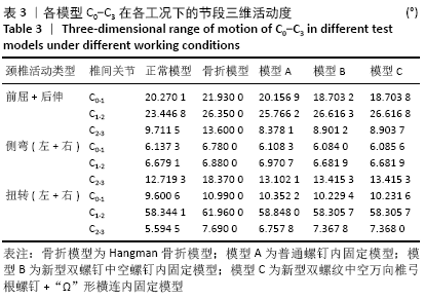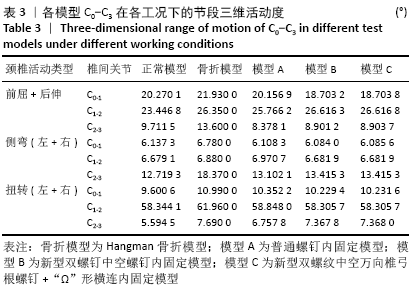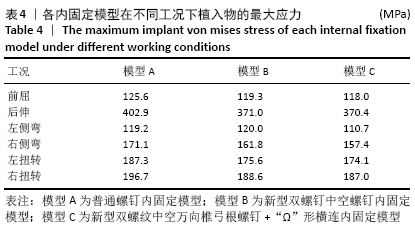[1] HAUGHTON S. IV. On hanging, considered from a mechanical and physiological point of view. Swim Austr. 1866;32:23-34.
[2] SCHNEIDER RC, LIVINGSTON KE, CAVE AJ, et al. “Hangman’s fracture” of the cervical spine. J Neurosurg. 1965;22:141-154.
[3] LEVINE AM, EDWARDS CC. The management of traumatic spondylolisthesis of the axis. J Bone Joint Surg Am.1985;67:217-226.
[4] AL-MAHFOUDH R, BEAGRIE C, WOOLLEY E, et al. Management of Typical and Atypical Hangman’s Fractures. Global Spine J. 2016;6: 248-256.
[5] 刘义杰,陈洁,姜为民,等.枢椎椎弓根拉力螺钉微创治疗Hangman骨折的临床研究[J]. 中华骨科杂志,2018,38(4):243-249.
[6] RAFFA SJ, LUTHER E, LEVI AD. Repair of isthmic pars interarticularis fractures: a literature review of conventional and minimally invasive techniques. J Neurosurg Sci. 2019;63:318-329.
[7] 陈语, 项良碧, 刘军, 等. Hangman骨折及其内固定三维有限元模型的建立[J]. 中国骨与关节损伤杂志,2012, 27(5): 389-392.
[8] LEE CH, HONG JT, KANG DH, et al. Epidemiology of Iatrogenic Vertebral Artery Injury in Cervical Spine Surgery: 21 Multicenter Studies. World Neurosurg. 2019;126:e1050-e1054.
[9] PANJABI MM, OXLAND TR, PARKS EH. Quantitative anatomy of cervical spine ligaments.Part I.Upper cervical spine. J Spinal Disord. 1991;4:270-276.
[10] YOGANANDAN N, KUMARESAN S, PINTAR FA. Biomechanics of the cervical spine Part 2.Cervical spine soft tissue responses and biomechabical modeling. Clin Biomech (Bristol,Avon). 2001;16:21-27.
[11] PANJABI M. Cervical spine models for biomechanical research. Spine. 1998;23:2684-2700.
[12] 陈强. 挥鞭样损伤的生物力学和临床研究[D]. 上海:第二军医大学, 2005.
[13] ITO S, IVANCIC PC, PANJABI MM, et al. Soft tissue injury threshold during simulated whiplash: a biomechanical investigation. Spine. 2004;29:979-987.
[14] TANG XM, LIU C, HUANG K, et al. Analysis of a three-dimensional finite element model of atlas and axis complex fracture. Zhonghua yi xue za zhi. 2018;98:1484-1488.
[15] PROST S, BARREY C, BLONDEL B, et al. Hangman’s fracture: Management strategy and healing rate in a prospective multi-centre observational study of 34 patients. Orthop Traumatol Surg Res. 2019; 105:703-707.
[16] TAIF S, MENON VK, ALRAWI A, et al. Imaging findings of flexion type of hangman’s fracture; an attempt for a more objective evaluation with newly introduced scoring system. Br J Radiol. 2017;90:20160793.
[17] Kong WJ, Yang X, Li ZY, et al. Analysis of the Cervical Sagittal Alignment in Patients with Unstable Hangman Fracture Under C2-3 Anterior Discectomy and Fusion. World Neurosurg. 2020;137:e1-e8.
[18] LI GZ, WANG Q, LIU H, et al. Individual Surgical Strategy Using Posterior Lag Screw-Rod Technique for Unstable Atypical Hangman’s Fracture Based on Different Fracture Patterns. World Neurosurg. 2018;119: e848-e854.
[19] WANG JX, CHEN HJ, CAO P, et al. Combined Anterior-Posterior Fixation and Fusion for Completely Dislocated Hangman’s Fracture: A Retrospective Analysis of 11 Cases. Clin Spine Surg. 2017;30: E1050-E1054.
[20] PATEL J, YOGESH K, KUNDNANI VG, et al. Unstable Hangman’s fracture: Anterior or posterior surgery? J Craniovertebr Junction Spine. 2019;10: 210-215.
[21] 刘金泉,王兆红. Halo-Vest头颈胸支具在寰枢椎骨折脱位中的应用评价[J]. 山西大同大学学报(自然科学版),2018,34(6):34-36,47.
[22] GREENE KA, DICKMAN CA, MARCIANO FF, et al. Acute axis fractures. Analysis of management and outcome in 340 consecutive cases. Spine. 1997;22:1843-1852.
[23] SINGH PK, VERMA SK, GARG M, et al. Evaluation of Correction of Radiologic Parameters (Angulation and Displacement) and Accuracy of C2 Pedicle Screw Placement in Unstable Hangman’s Fracture with Intraoperative Computed Tomography-Based Navigation. World Neurosurg. 2017;107:795-802.
[24] MAN KC, YOUNGSEOK K, KI HK, et al. Direct trans-pedicular screw fixation for atypical hangman’s fracture: A minimally invasive technique using the tubular retractor system. J Clin Neurosci. 2019;70:146-150.
[25] CHEN J, NING X, YILONG R, et al. How Does Cervical Sagittal Balance Change After Hangman Fracture Treated with Anterior or Posterior Approach Surgery? World Neurosurg. 2020;138:e767-e777.
[26] Yukawa Y, Kato F, Ito K, et al. Placement and complications of cervical pedicle screws in 144 cervical trauma patients using pedicle axis view techniques by fluoroscope. Eur Spine J. 2009;18:1293-1299.
[27] 李新武, 金根洋, 刘锦, 等. 加自制横连的后路C2椎弓根螺钉系统治疗不稳定Hangman骨折[J]. 中国矫形外科杂志,2018,26(4): 351-354.
[28] 武鹏, 金根洋,李新武, 等. Hangman骨折新型内固定模型的三维有限元分析[J]. 中国骨与关节损伤杂志,2019,34(11):1150-1152.
[29] Magee W, Hettwer W, Badra M, et al. Biomechanical comparison of a fully threaded, variable pitch screw and a partially threaded lag screw for internal fixation of Type II dens fractures. Spine. 2007;32: E475-479.
[30] 姚建,金根洋,李新武,等. 两种不同C2椎弓根螺钉加“Ω”形横连治疗Ⅱ型Hangman骨折的生物力学研究[J]. 中国脊柱脊髓杂志,2019,29(7):635-640,649.
[31] 胥少汀,葛宝丰,卢世璧,等.实用骨科学[M].郑州:河南科学技术出版社,2019:1-4.
[32] 保国锋,陈佳佳,李卫东,等. 基于术中三维影像的经皮枢椎椎弓根螺钉内固定治疗Hangman骨折[J]. 脊柱外科杂志,2019, 17(4): 230-234,287.
|



